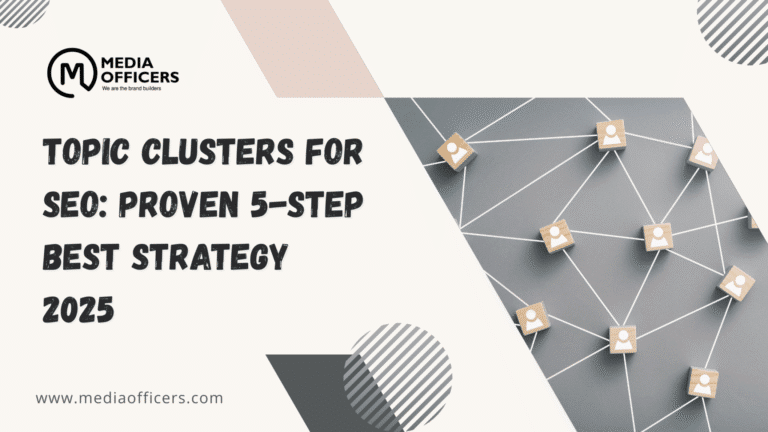We’re entering the black box SEO era, where measurement is less about precise rankings and more about presence, credibility, and how people actually engage with content. This shift isn’t a minor tweak; it’s a fundamental reorientation of what success looks like in search. For marketers, leadership, and clients accustomed to tidy dashboards, the change can feel like stepping into a fog. Yet it also unlocks a more human, context-rich view of visibility.
Across the industry, signals once considered airtight are morphing. The removal of the num=100 parameter, the rise of JavaScript rendering for rank tracking, and the opaque nature of AI Overviews all contribute to a data landscape that is thinner, messier, but arguably more truthful about what actually happens in search results. This article lays out what to measure, how to report it, and why the best SEO teams will lean into storytelling as much as analytics.
What is the Black Box SEO Era?
The black box SEO era is defined not by the exactness of every rank, but by the visibility a brand earns in human-perceived space. It’s the moment when an algorithmic system can surface answers without traceable sources, and when a single AI-generated snippet can shape perception more than a page one listing. In black box SEO era, your work shifts from chasing keyword perfection to building durable presence that can be observed, cited, and trusted.
In practice, this means we measure how often your brand appears in knowledge graphs, in reputable media, and in AI-driven answers. It means looking beyond total impressions to the quality of exposure and the credibility attached to your signals. The old model rewarded the volume of data; the new model rewards the relevance and trust embedded in your brand’s narrative.
The Data We Rely on Is Shifting
One small change imposes a large ripple: Google’s withdrawal of the num=100 parameter. No longer can we reliably request the full first hundred results for a query. The practical effect is a thinner view of the landscape, particularly at the long tail. Tools that used to surface low-hanging fruit beyond page one now offer only partial samples or rely on synthetic estimates. This makes week-to-week benchmarking noisier and more challenging to defend without context.
At the same time, the industry is grappling with deep-page impressions that may have been inflated by bots and non-human activity. By zeroing in on what real users see on the first page, reporting becomes more human-aligned, but the window for discovery tightens. The result is a more honest reflection of actual opportunity, and a warning that the long tail is becoming less actionable as a routine source of growth.
New Deliverables for the Black Box SEO Era
To stay effective in this environment, the focus shifts from dashboards to credible signals that withstand opacity. The list below outlines the new deliverables that lead strategy in a world where precise ranks matter less, but presence and trust matter more.
Entity Authority
Entity authority is about how your brand is recognized as an expert. In the knowledge graph and AI-produced answers, the strength of your entity determines whether you show up and how often. Track structured data, schema alignment, and consistent references across credible sources. The stronger your entity, the more likely your brand will surface in AI companions and in authoritative knowledge panels.
Earned Visibility
Earned visibility comes from media mentions, guest articles, and digital PR campaigns that place your brand in trusted contexts. A single credible citation can carry more signal than dozens of low-value links. The goal is to secure quality mentions that reinforce topical authority and expand your brand’s footprint beyond a single search engine result.
AI Citations
AI citations track appearances in AI-driven surfaces like AI Overviews, ChatGPT Browse, and similar copilots. Tracking these appearances even at a rough level helps illustrate how often your brand is referenced in AI systems. Start with manual observation, then move to formal baselines as tools mature. This is not perfect yet, but it’s increasingly essential.
Share of Answer
Share of answer measures how frequently your brand is represented in synthesized responses relative to competitors. It is the modern analog of share of voice, reframed for an AI-first environment. It’s not about occupying the top spot in a vanity metric; it is about being cited when the system explains a concept.
Trust Signals
Trust signals connect traditional E-E-A-T principles to AI-era credibility. Clear author bios, first-hand experience, and solid external citations help search engines and LLMs decide what to trust. As AI systems increasingly draw on broad signals, trusted sources become more valuable than raw links alone.
Closing the SEO-PR Divide
This transition also makes the relationship between SEO and PR essential. Earned coverage has always mattered, but now it is a direct input into AI visibility and brand memory. Press mentions, brand mentions, and syndicated coverage no longer live outside SEO; they reinforce entity strength and topic authority in ways dashboards cannot capture.
PR isn’t new to search, but its value today is different. It’s not just about backlinks; it’s about creating credible data points that AI systems can recognize and cite. Fresh, authoritative information is currency in this era, and it remains a powerful engine for long-term visibility.
The Once and Future Marketing
In the 1960s, marketers did not ride dashboards. They reported visibility in the channels that shaped perception: television, magazines, newspapers. The metrics were qualitative, not granular. SEO is circling back to that mindset. The goal shifts from proving exact keyword positions to proving presence and impact in meaningful places.
To younger readers, this is a return to brand vibes over vanity metrics. Think of Don Draper’s carousel pitch where data met story and emotion. The best SEO professionals will adopt that mindset, translating numbers into narrative that persuades stakeholders and guides strategy. The heart of SEO becomes credibility and resonance, not just the precision of a single metric.
What SEOs Should Do Next
With full SERP visibility no longer guaranteed, a new playbook is needed. Start by revising how you research keywords, plan content, and measure impact.
- Supplement Search Console with third-party data, paid search signals, and clickstream analytics to approximate a fuller opportunity map.
- Make striking-distance analysis probabilistic. Build models of visibility rather than counting exact ranks.
- Audit your reporting stack and flag metrics that are no longer reliable after the num=100 change. Provide stakeholders with a clear guide to what remains sound.
- Track AI visibility by capturing baselines for AI Overviews and other AI surfaces, even if the data is imperfect at first.
- Push KPIs toward presence and credibility: earned citations, knowledge graph entries, and AI mentions rather than pure rankings.
- Embed PR into SEO strategy. Collaborative campaigns that generate authoritative mentions feed AI ecosystems and reinforce topical relevance.
The Step-by-Step Strategy to Execute
- Analyze Search Intent & Keywords. Identify the audience’s purpose behind the topic, choose a clear focus keyword, and select 3-4 supporting related keywords to map your content around.
- Craft Core SEO Elements. Use the focus keyword at the start of your title, add a power word and a sentiment word, include a number, and keep the title under 65 characters. Create a compelling meta description that invites clicks while reflecting the new measurement reality.
- Develop a Content Framework. Build sections around the core deliverables: entity authority, earned visibility, AI citations, share of answer, and trust signals, then weave secondary keywords naturally throughout your headings.
- Audit & Align Reporting. Label metrics that have become distorted by the data shifts. Document the changes for stakeholders and provide a path for baselines and new dashboards.
Strategies for the People Side of the Black Box SEO Era
In a world where dashboards lie, the best SEOs become storytellers. The emphasis on visibility, credibility, and authority helps bridge the gap between numbers and narratives. Educate clients and leaders about what can be known, what is inferred, and what remains unknowable. This honest storytelling mindset reduces misinterpretation and strengthens strategic influence.
The Data-Driven but Narrative-First Report
Reports must acknowledge opacity and still prove value. A narrative framework that blends data with story helps stakeholders understand the why behind changes in impressions, AI mentions, and brand citations. The aim is not pure optimization for rankings but strategic positioning in places that shape perception and long-term brand health.
Common Pitfalls in the Black Box SEO Era
As teams navigate this transition, several traps recur. Being aware of them can save time and preserve credibility.
- Over-relying on AI citations without validating sources or context.
- Confusing a drop in impressions with a loss of meaningful presence.
- Ignoring the quality of exposure in favor of raw numbers.
- Rushing to replace dashboards with opaque metrics that executives can’t interpret.
Conclusion
The future of SEO is not a race to perfect precision but a steady discipline of presence, trust, and influence. In a black box SEO era, the most successful campaigns will be those that tell a compelling story about where your brand appears, who cites it, and why it matters. By combining PR instincts with rigorous SEO discipline, modern teams can build credible, resilient visibility that stands up to shifting data realities. The charts may be thinner, but the strategy becomes richer and more human.
Frequently Askeded Questions
What is the black box SEO era, and why does it matter?
The black box SEO era refers to a time when exact rankings are less central than credible presence and trust signals. It matters because search and AI systems increasingly depend on entity authority, earned media, and AI visibility rather than raw keyword counts.
How should I measure success in this era?
Focus on presence and credibility. Track entity authority, earned visibility, AI citations, and share of answer. Incorporate PR-driven signals and knowledge graph coverage into dashboards to reflect a broader view of impact.
What practical steps can I take this quarter?
Audit your data sources, implement a presence-driven KPI framework, start logging AI appearances, and kick off a PR-powered content campaign to build authoritative mentions and support AI visibility.
Will this change my daily SEO tasks?
Yes. You’ll spend more time on narrative development, cross-functional collaboration with PR, and steady monitoring of non-traditional signals rather than chasing every rank change.





